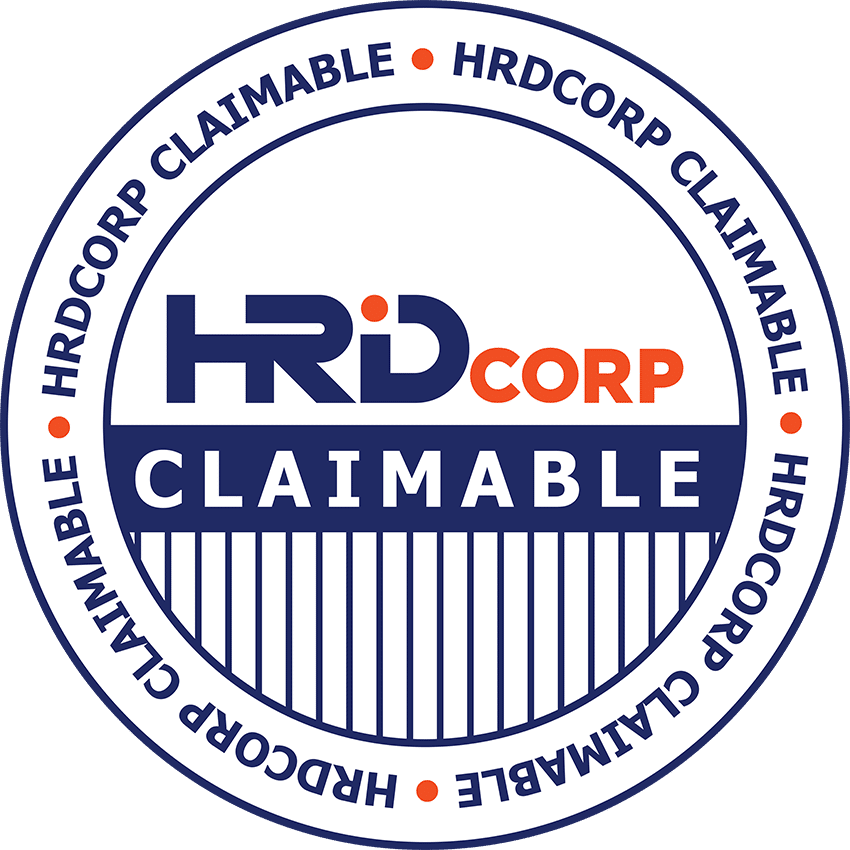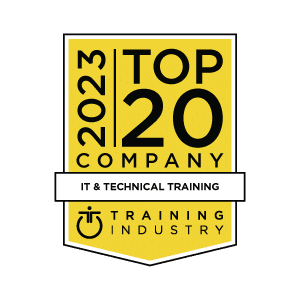Overview
Develop Generative AI Solutions with Azure OpenAI Service
Azure OpenAI Service provides access to OpenAI’s powerful large language models such as GPT; the model behind the popular ChatGPT service. These models enable various natural language processing (NLP) solutions to understand, converse, and generate content. Users can access the service through REST APIs, SDKs, and Azure OpenAI Studio. In this course, you’ll learn how to provision Azure OpenAI service, deploy models, and use them in generative AI applications.
Skills Covered
- Introduction to Azure OpenAI Service
- Get started with Azure OpenAI Service
- Build natural language solutions with Azure OpenAI Service
- Apply prompt engineering with Azure OpenAI Service
Who Should Attend
The audience for this course includes software developers and data scientists who need to use large language models for generative AI. Some programming experience is recommended, but the course will be valuable to anyone seeking to understand how the Azure OpenAI service can be used to implement generative AI solutions.
Job role: AI Engineer, Data Scientist
Course Curriculum
Prerequisites
There are no prerequisites required to attend this course.
Download Course Syllabus
Course Modules
Get to know the connection between artificial intelligence (AI), Responsible AI, and text, code, and image generation. Understand how you can use Azure OpenAI to build solutions against AI models within Azure.
Learning objectives
In this module you’ll learn how to:
- Describe Azure OpenAI workloads and access the Azure OpenAI Service
- Understand generative AI models
- Understand Azure OpenAI’s language, code, and image capabilities
- Understand Azure OpenAI’s responsible AI practices and limited access policies
Prerequisites
None
This module provides engineers with the skills to begin building an Azure OpenAI Service solution.
Learning objectives
By the end of this module, you’ll be able to:
- Create an Azure OpenAI Service resource and understand types of Azure OpenAI base models.
- Use the Azure OpenAI Studio, console, or REST API to deploy a base model and test it in the Studio’s playgrounds.
- Generate completions to prompts and begin to manage model parameters.
Prerequisites
- Familiarity with Azure and the Azure portal.
- An understanding of generative AI. You can learn more with Introduction to Azure OpenAI Service.
This module provides engineers with the skills to begin building apps that integrate with the Azure OpenAI Service.
Learning objectives
By the end of this module, you’ll be able to:
- Integrate Azure OpenAI into your application
- Differentiate between different endpoints available to your application
- Generate completions to prompts using the REST API and language specific SDKs
Prerequisites
- Familiarity with Azure and the Azure portal.
- An understanding of generative AI. You can learn more with Introduction to Azure OpenAI Service.
- Experience programming with C# or Python. If you have no previous programming experience, we recommend you complete the Take your first steps with C# or Take your first steps with Python learning path before starting this one.
Prompt engineering in Azure OpenAI is a technique that involves designing prompts for natural language processing models. This process improves accuracy and relevancy in responses, optimizing the performance of the model.
Learning objectives
By the end of this module, you’ll be able to:
- Understand the concept of prompt engineering and its role in optimizing Azure OpenAI models’ performance.
- Know how to design and optimize prompts to better utilize AI models.
- Include clear instructions, request output composition, and use contextual content to improve the quality of the model’s responses.
Prerequisites
- Familiarity with Azure and the Azure portal.
- An understanding of generative AI. You can learn more with Introduction to Azure OpenAI Service.
- Experience programming with C# or Python. If you have no previous programming experience, we recommend you complete the Take your first steps with C# or Take your first steps with Python learning path before starting this one.
- Before starting this module, we recommend you complete the previous modules in the Develop AI solutions with Azure OpenAI learning path.
Request More Information
Training Options
- ILT: Instructor-Led Training
- VILT: Virtual Instructor-Led Training
RM1,200.00Enroll Now
RM1,200.00Enroll Now
Exam & Certification
This course is not associated with any Certification.
Training & Certification Guide
AI Mastery Program: Learn AI with Microsoft in 2024
Artificial Intelligence (AI) has been one of the hottest topics in the tech industry for the past decade. With its rapid advancements and potential to impact our daily lives, learning AI has become a highly sought-after skill.
We are thrilled to announce the launch of our Microsoft AI Mastery Program in 2024, made possible through our partnership with Microsoft, a renowned leader in AI technology. This program is tailored for individuals and tech professionals passionate about acquiring and mastering the fundamental and advanced principles of AI.
Top AI Skills Malaysia Needs Today: Advance Your IT Career in 2024
In the quest for AI-driven innovation, Malaysia seeks sharp minds with the right IT skills. Data science, machine learning—these are the tools in high demand. This article examines the AI skills Malaysia needs, the industries driving this change, and how to develop these skills to enhance your career trajectory.
Azure Strategy & Implementation Guide
Get a step-by-step introduction to using Azure for your cloud infrastructure with this Pack e-book. Read the latest edition of the Azure Strategy and Implementation Guide for detailed guidance on how to create a successful cloud adoption strategy with new innovations, capabilities, and security features from Microsoft Azure.
Microsoft Azure SQL Jumpstart Guide
Find out how to get started launching your first Azure SQL database or find ways to make your existing SQL database work harder. Download the Azure SQL Jumpstart Guide for detailed instructions and in-depth insights to help you make your Azure SQL deployment, migration, or enhancement run smoothly.
Low-code Application Development – Microsoft PowerApps and Azure
Build production-ready apps faster with a low-code environment. Quickly stand up your applications with Power Apps and get more time to apply your technical expertise to extending and optimizing those apps in Azure.
Azure Cloud Native Architecture Mapbook
Grow your cloud architecture skills with guidance from Azure Experts. Go beyond developing cloud-native applications to planning and implementing cloud application infrastructure. In this free e-book from Packt Publishing, you’ll find best practices for infrastructure design and patterns for building a complete solution.
Windows Virtual Desktop Security
Find out how to secure your Windows Virtual Desktop environment when migrating your virtual desktop infrastructure (VDI) to Azure. Read this security handbook to get technical hands-on guidance on how to help protect your apps and data in your Windows Virtual Desktop deployment.
Discover how to get more value from your on premises Windows Server and SQL Server investments and move some or all of your workloads to the cloud using your existing skills. See how to start using the cloud to support new ways of doing business and help ensure business continuity even if you need to keep some of your IT assets on-premises due to regulatory or data governance requirements.
Discover how to build highly scalable applications using containers and how to deploy and manage those containers at scale with Kubernetes on Azure. Read the completely reviewed and updated Packet e-book, Hands-On Kubernetes on Azure, Third Edition and discover what’s new, including security enhancements, continuous integration and continuous delivery (CI/CD) automation, and the latest supported technologies. Gain insight into building reliable applications in the new foreword by Kubernetes co-founder Brendan Burns.
Azure Synapse Analytics Proof of Concept Playbook
Learn how to perform a proof of concept efficiently and economically with Azure Synapse Analytics. Read the Azure Synapse Analytics Proof of Concept Playbook to understand the key concepts involved in deploying data warehousing, data lake, and big data workloads with Azure Synapse and get the evidence you need to make the case for implementation at your organization.
Spend less time managing server infrastructure and more time building great apps. Get your solutions to market faster using Azure Functions, a fully managed compute platform for processing data, integrating systems, and building simple APIs and microservices. The Azure Serverless Computing Cookbook will, through the development of basic back-end wep API that performs simple operations, helps you understand how to persist data in Azure Storage services.
Frequently Asked Questions
Azure OpenAI Service provides REST API access to OpenAI’s powerful language models including the GPT-4, GPT-35-Turbo, and Embeddings model series. In addition, the new GPT-4 and gpt-35-turbo model series have now reached general availability. These models can be easily adapted to your specific task including but not limited to content generation, summarization, semantic search, and natural language to code translation. Users can access the service through REST APIs, Python SDK, or our web-based interface in the Azure OpenAI Studio.
Azure OpenAI Service gives customers advanced language AI with OpenAI GPT-4, GPT-3, Codex, and DALL-E models with the security and enterprise promise of Azure. Azure OpenAI co-develops the APIs with OpenAI, ensuring compatibility and a smooth transition from one to the other.
With Azure OpenAI, customers get the security capabilities of Microsoft Azure while running the same models as OpenAI. Azure OpenAI offers private networking, regional availability, and responsible AI content filtering.
Generative AI refers to a category of AI that uses systems called neural networks to analyze data, find patterns and use these patterns to generate or create a new output, such as text, photo, video, code, data, and more. Examples of how Microsoft is using generative AI include GitHub Copilot, the new Bing and Bing Chat experience, new Viva Sales and Dynamics 365 experiences, DALL-E in Designer and Bing Image Creator. We are also making this technology available to customers through the Azure OpenAI Service.


